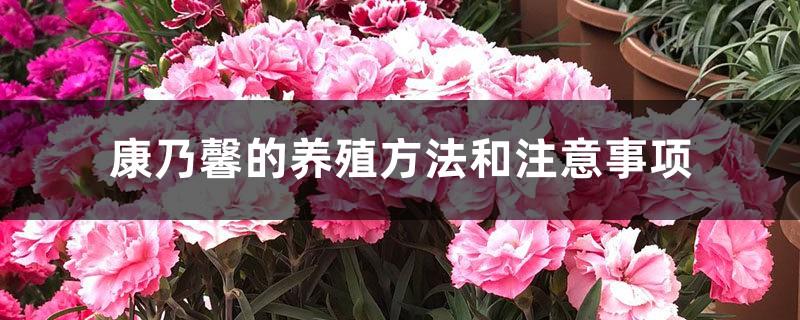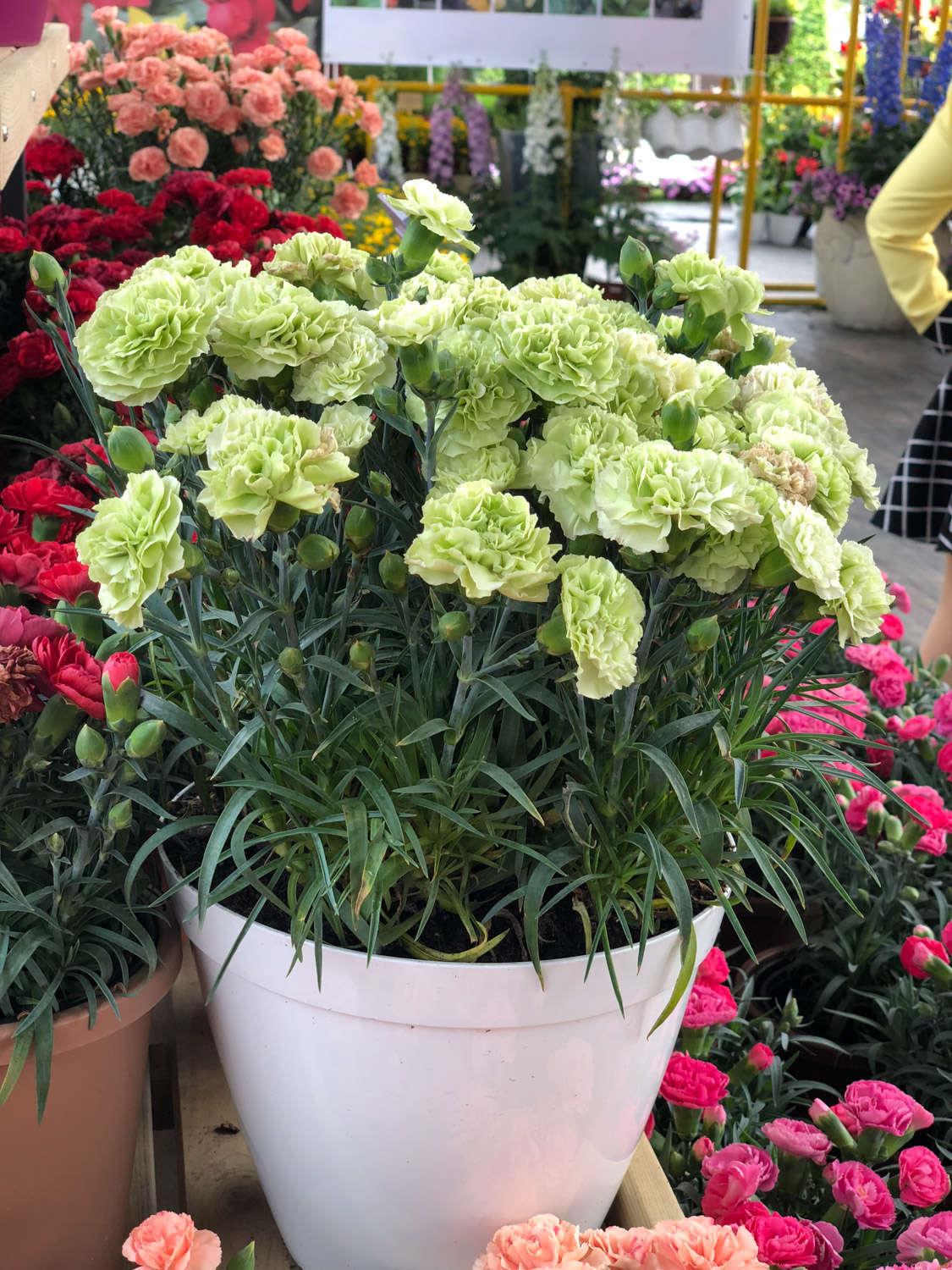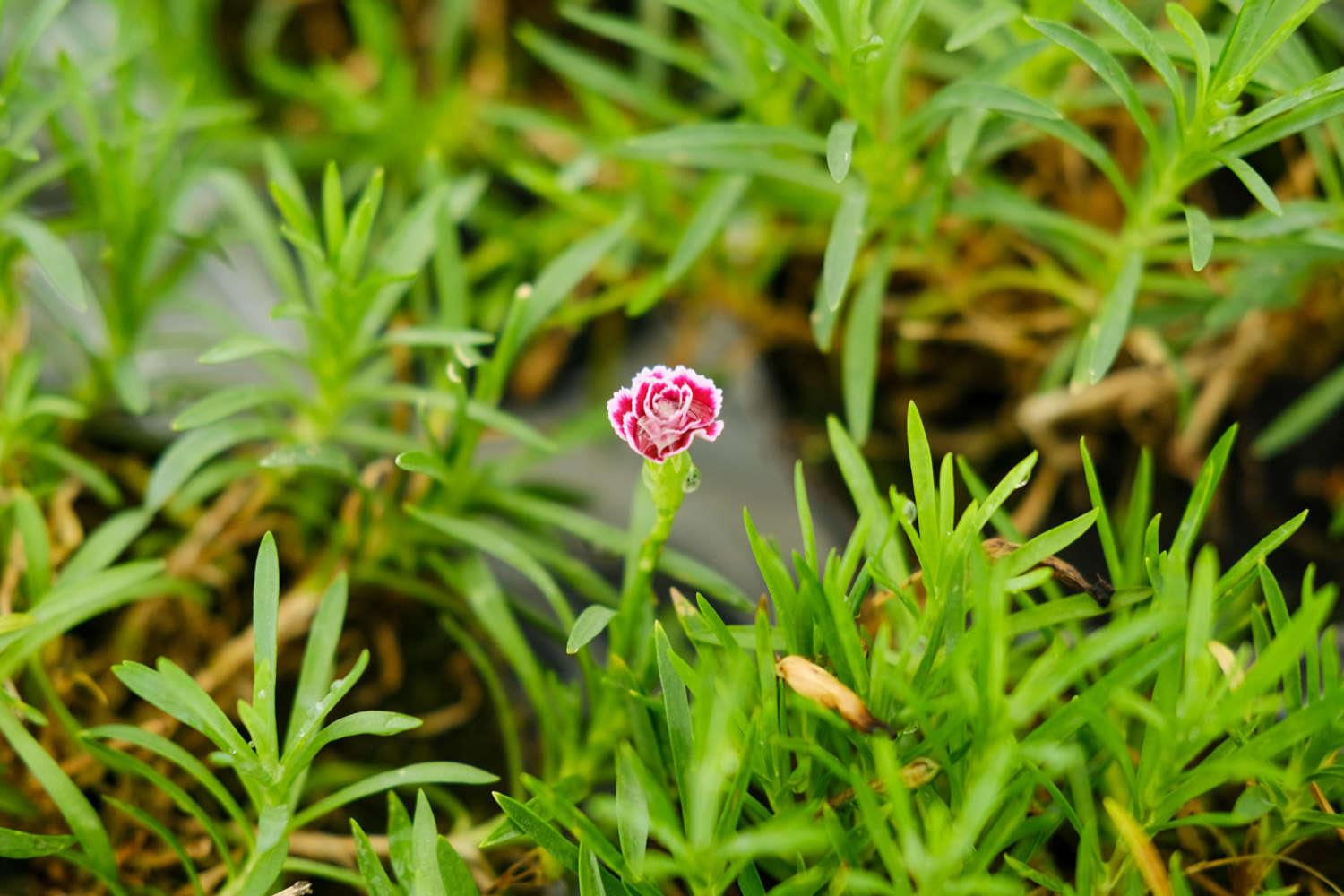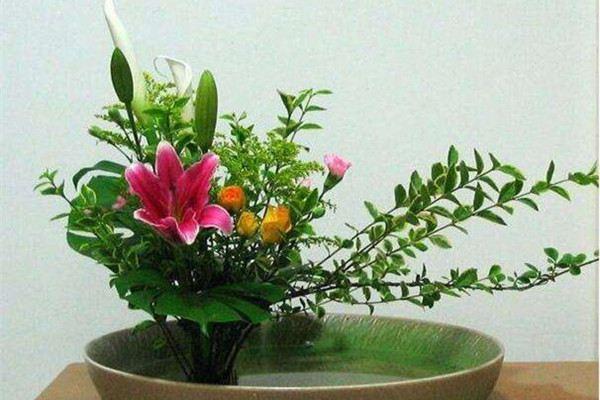Carnation cultivation methods and precautions
Last Update :2024.11.13
Article Catalog
Soil: To grow carnations, use loose, fertile, well-aerated soil. Temperature: 19-21℃, the temperature difference between day and night should be within 10℃, not higher than 35℃ in summer and not lower than 9℃ in winter. Light: Except for the seedling stage and the flowering stage, give it as much light as possible. Watering: see dry and wet, but not too much. Fertilization: There should be base fertilizer in the soil and top dressing during the growth period.

1. Soil
1. Soil
Soil is the place where plant roots move. It creates a loose and breathable environment and has a certain water retention capacity, which is crucial for the cultivation of carnations. Carnations are fibrous flowers whose root systems grow well in loose, fertile, well-aerated soil.
It is best to choose sandy soil for planting carnations. Heavy and silted soil is not good for the growth of carnations and needs to be improved.
2. Temperature
Carnation is a cold-loving plant. The optimal temperature for growth and development is 19-21℃, and the temperature difference between day and night should be kept within 10℃. If the temperature is too high during the day, carnations will have undesirable phenomena such as small flowers, narrow leaves, and few branches. The temperature between the leaves should not be too high, otherwise abnormal reactions such as weak stems, small flowers, and good color will occur. If the summer temperature is higher than 35°C and the winter temperature is lower than 9°C, growth will be slow or the plant will grow poorly or even stop growing.

3. Light
Carnation pair The plant has very high light requirements. Except for the seedling or blooming period, there is no need to worry about the adverse effects of strong light on carnations. As a long-day plant, longer sunlight can promote the differentiation of flower buds and bloom earlier.
The use of auxiliary light can not only promote the growth of plant internodes and inhibit the growth of side branches, but also increase the diameter of the corolla and the brightness of the flower color.
4. Watering
Carnations are shallow-rooted flowers, and the planting depth should not exceed 2 cm. Water once after planting, then water again when the pot soil is dry. Carnations are very intolerant to moisture. Except for the need to increase the amount of watering during the vigorous growth period, flowering period, and midsummer, under normal circumstances, watering should not be excessive and the soil should be kept at a certain humidity. Be careful not to make the soil too dry or too wet during flowering.

5. Fertilization
Carnation is For shallow-rooted plants, the root system is generally distributed in a soil layer of about 20 cm, so when planting, a sufficient amount of base fertilizer should be applied to the soil. The base fertilizer uses organic fertilizers such as manure, compost, and bone meal to improve the physical properties of the cultivation soil and enhance its fertility, turning it into humus-rich, easily fertile loam.
Carnations require constant supplementation of fertilizers during their growth period. The principle of top dressing is to apply thin fertilizer frequently and once every 25 to 30 days. For smaller potted plants, topdress once every 10 days. During the peak growth period of the plant, the frequency of top dressing can be increased. Fertilizers can be cake fertilizer water, chicken manure water, or alternate compound fertilizers.
6. Precautions
During the vigorous growth period of spring and autumn, the soil should be kept moist to meet the needs of growth and development. Growth is inhibited during the high temperature period in summer. At this time, watering should be controlled and ventilation should be strengthened to keep the pot soil slightly dry.
Generally, when entering the greenhouse before and after frost, the most suitable temperature control is between 10 and 20°C. In order to delay the flowering period, the temperature can be adjusted up or down appropriately. Try to reduce the humidity in the greenhouse to reduce the occurrence of diseases.
Enter the house in winter and cultivate it in a sunny and well-ventilated place. If the temperature is suitable, the flowering period can be extended to March of the following year.
2. Temperature
3. Lighting
4. Watering
5. Fertilization
6. Things to note
- END -
A collection of flower arrangement skills (1)

Many flower lovers like to arrange flowers. Flower arrangement can not only cultiv...
What are the types of wild vegetables?

Malantou: It is the wild vegetable that everyone often refers to. It is delicious,...